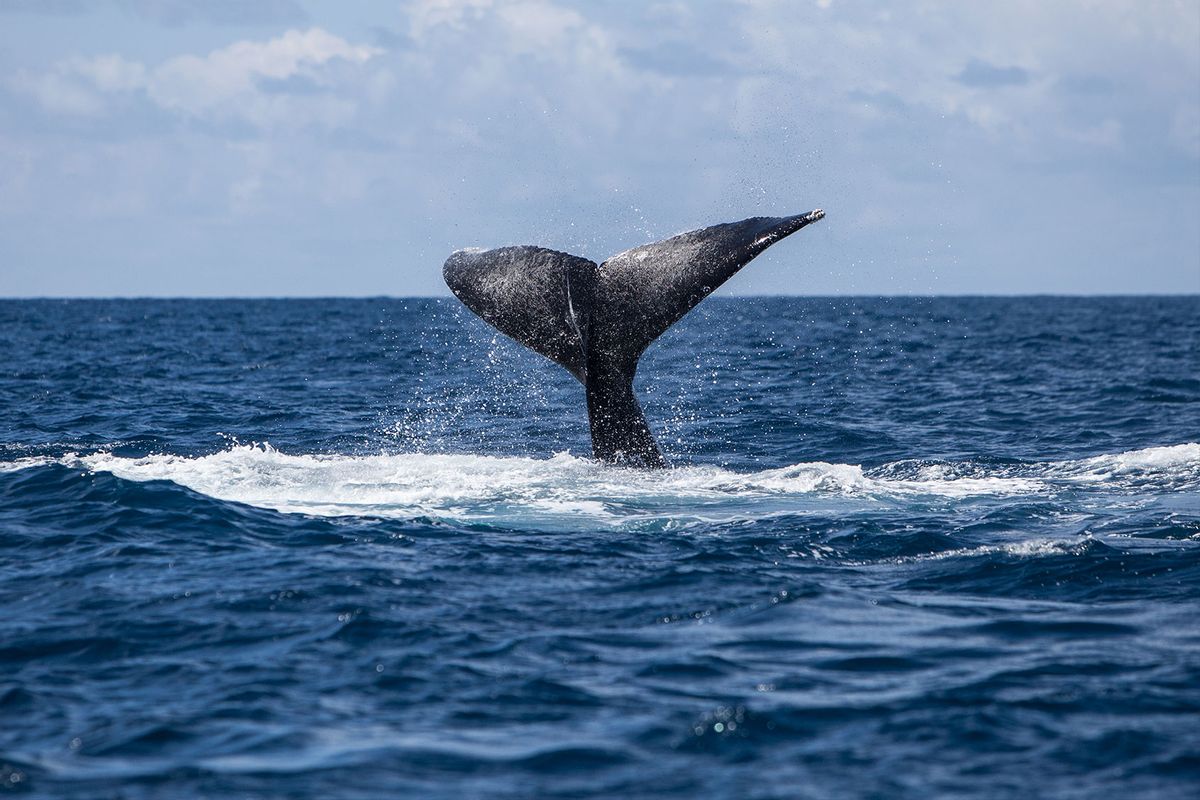Whales are best known for their massive size and the biggest among them are the baleen whales. Containing 16 different whale species, the biggest of the baleen whales — the blue whale — measures in at a staggering 31 meters (102 feet) and 190 tons (210 short tons). Even the smallest baleen whale, the pygmy right whale, is a not-inconsiderable 6 meters (20 feet) and 3,000 kilograms (6,600 lb). Given these impressive statistics, one might expect whales to create vocal sounds so powerful that humans could hear them from miles away.
This low frequency makes the whales' vocalizations extremely vulnerable to human noise pollution like shipping traffic.
Instead, as a recent study for the journal Nature demonstrates, the opposite is in fact true. Indeed, the whale song is an ethereal and strange underwater ballad, but before this study it wasn't entirely clear which organs the whales used to make the sound. And although baleen whales have evolved very unique vocal cords to serve their particular needs, that evolutionary edge is no match for human activity ... specifically, noise pollution.
As the study authors explain, baleen whales and their toothed whale cousins could not survive with the larynxes from their land mammal ancestors. In order to avoid choking underwater while still producing sounds, their larynxes developed special types of arytenoids (tiny cartilages that are also present in human larynxes). Baleen whale arytenoids look like large, long cylinders which are fused at their base, and thereby create a U-shaped structure covering nearly the entire length of the larynx.
Human arytenoids, by contrast, are smaller, less developed and leave more space over our larynx. That is because, unlike humans, baleen whales need to maintain a rigid and open airway when performing explosive surface breathing.
“We found that this U-shaped structure pushes against a big fatty cushion on the inside of the larynx," Professor Coen Elemans, one of the study's lead authors and a biologist at University of Southern Denmark, said in a statement. "When the whales push air from their lungs past this cushion, it starts to vibrate and this generates very low frequency underwater sounds."
On the one hand, the baleen whales' unusual larynx endows them with a remarkable ability. They can vocalize at extremely low frequencies and in so doing communicate with other whales as far down into the ocean as 100 meters deep. At the same time, this low frequency makes the whales' vocalizations extremely vulnerable to human noise pollution like shipping traffic.
"These laryngeal structures set insurmountable physiological limits to the frequency range and depth of their vocalizations, preventing them from escaping anthropogenic vessel noise and communicating at great depths, thereby greatly reducing their active communication range," the authors write in their study.
Want more health and science stories in your inbox? Subscribe to Salon's weekly newsletter Lab Notes.
"We observe navigation impairment that ranges from mild (increased journey time) to extreme (failed navigation)."
This recent study is only the latest in a large body of research about the ill effects of noise pollution on ocean life. Another study this month from the journal Movement Ecology used sophisticated computer models to determine how shipping noise and other human activity impacts baleen whale migration. As the beleaguered animals cope with a smaller communication space, they also struggle to pick up external sound cues and avoid unpleasant noises. The end result is that they cannot migrate as easily as they did before all of the human noise interference.
"Comparing pristine and current soundscapes, we observe navigation impairment that ranges from mild (increased journey time) to extreme (failed navigation)," the authors of the study write.
Whales are not the only aquatic lifeforms to suffer due to noise pollution. A 2021 article in the journal Science found that anthropogenic noise causes distress to animals ranging from dolphins who can't navigate to baby clown fish who struggle to recognize their habitats.
"Existing evidence shows that anthrophony affects marine animals at multiple levels, including their behavior, physiology, and, in extreme cases, survival," the authors explained. "This should prompt management actions to deploy existing solutions to reduce noise levels in the ocean, thereby allowing marine animals to reestablish their use of ocean sound as a central ecological trait in a healthy ocean."
We need your help to stay independent
Similarly a 2023 paper in the journal Science Advances argued that noise pollution is so severe that global solutions are required. As explained by University of California Santa Barbara marine biologist Douglas McCauley, the best way to protect ocean life is to slow down ships, route ships away from whale habitats and develop new technologies to muffle ship noise.
"An ocean of autonomous ships programmed to travel at responsible speeds when whales are near, coastal fleets of quieter electric ships, entanglement-free next-generation fishing, and carefully zoned and properly silenced offshore wind farms are all parts of an achievable, whale-friendly ocean future that is today not very far from reach," McCauley wrote. "We owe it to our whale elders to leverage the power of science to bring this future forward faster."

Shares